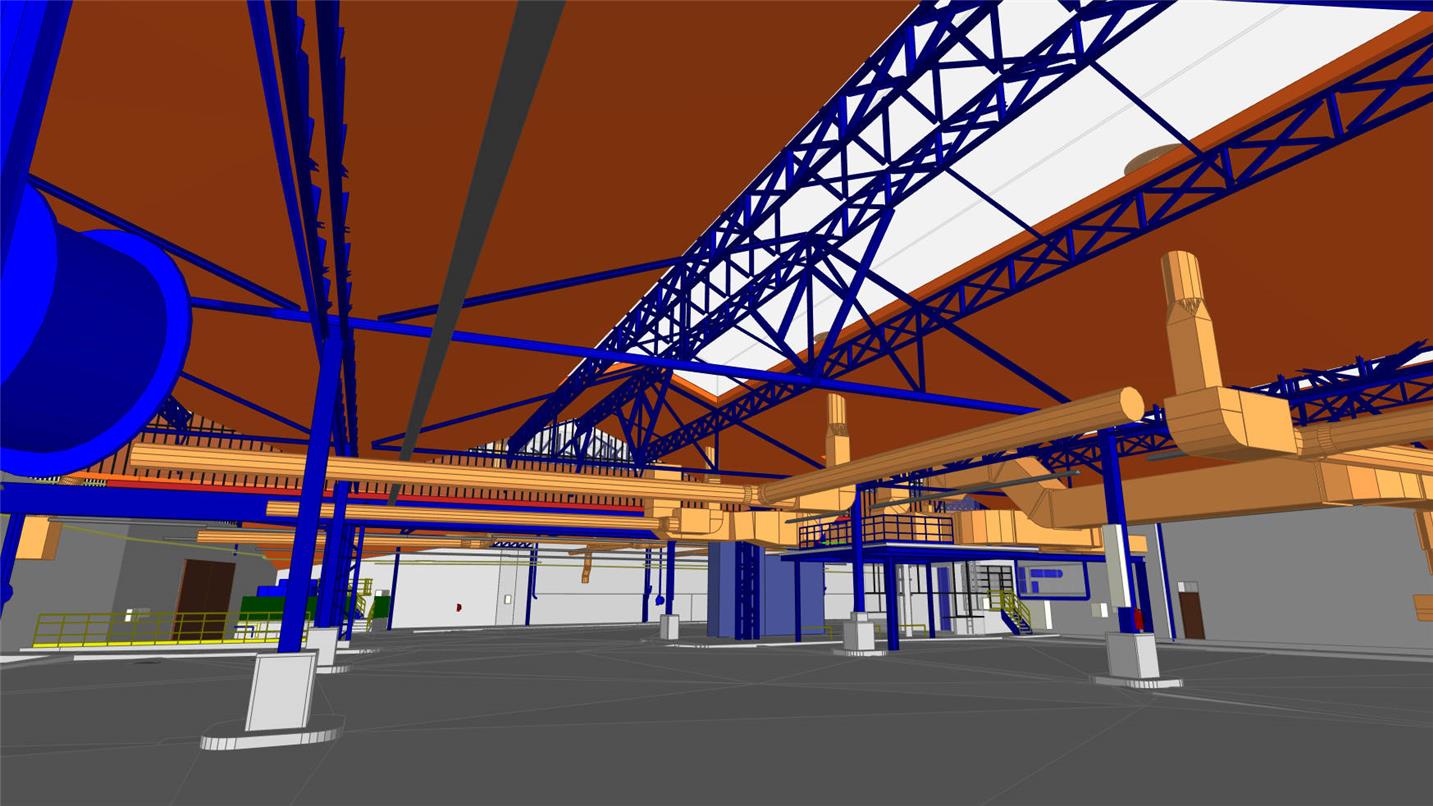Le BIM, bien plus qu’un outil de modélisation
Qu’est-ce que le BIM ?
Le BIM est principalement caractérisé par des méthodes de travail et une maquette numérique 3D contenant des données intelligentes et structurées. Outre les 3 dimensions issues des caractéristiques physiques et fonctionnelles d’un ouvrage, la maquette numérique intègre potentiellement un certain nombre de paramètres (temporels, financiers, environnementaux et patrimoniaux).
C’est avant tout une base de données techniques, constituée d’objets définis par leurs caractéristiques et leurs relations entre eux. Le tout forme un ensemble structuré d’informations permettant de concevoir, construire et exploiter un ouvrage tout au long de son cycle de vie.
Alliant évolution technologique et redéfinition de la collaboration entre intervenants, le BIM est avant tout une médiation entre les différents acteurs de la chaîne décisionnelle, allant du maître d’ouvrage jusqu’aux entreprises qui interviennent sur ce chantier.
Les usages du BIM, ou BIM Uses, permettent une amélioration continue de gestion de projets et d’optimisation des ressources, qu’elles soient humaines, matérielles ou environnementales. “Construire numériquement avant de construire” permet :
Ces processus développés par usage offrent aux professionnels de l'architecture, de l'ingénierie et de la construction (AEC) les informations et outils nécessaires pour planifier, concevoir, construire et gérer plus efficacement bâtiments et infrastructures.
Source : buildingSMART France
C’est avant tout une base de données techniques, constituée d’objets définis par leurs caractéristiques et leurs relations entre eux. Le tout forme un ensemble structuré d’informations permettant de concevoir, construire et exploiter un ouvrage tout au long de son cycle de vie.
Alliant évolution technologique et redéfinition de la collaboration entre intervenants, le BIM est avant tout une médiation entre les différents acteurs de la chaîne décisionnelle, allant du maître d’ouvrage jusqu’aux entreprises qui interviennent sur ce chantier.
Les usages du BIM, ou BIM Uses, permettent une amélioration continue de gestion de projets et d’optimisation des ressources, qu’elles soient humaines, matérielles ou environnementales. “Construire numériquement avant de construire” permet :
- La prise en compte d’un plus grand ensemble d’informations, dès la conception (notamment les besoins d’exploitation) ;
- Une meilleure maitrise du coût global, par l’optimisation des solutions constructives ou l’anticipation de problèmes pouvant être rencontrés en phase d‘exécution ;
- Une prise de décisions de plus grande qualité.
Ces processus développés par usage offrent aux professionnels de l'architecture, de l'ingénierie et de la construction (AEC) les informations et outils nécessaires pour planifier, concevoir, construire et gérer plus efficacement bâtiments et infrastructures.
Source : buildingSMART France

Avec la modélisation des données et le développement de maquettes numériques, le travail devient collaboratif entre les différents corps de métiers et nécessite une excellente coordination pour suivre ces projets 3.0. C’est le chemin sur lequel nous sommes engagés avec le souci de la bonne formation de chacun, du maître d’ouvrage aux entreprises de travaux.Alice de Kergariou , Directrice Grands Projets
Notre offre
Apporter un accompagnement sur-mesure à tous nos clients
Leaders et pionniers sur la modélisation des infrastructures hydrauliques depuis 2011, les équipes de SUEZ Consulting apportent leurs expertises de BIM Managers, Coordinateurs ou Modeleurs à l’ensemble de leurs clients, en France et à l’international.À toutes les étapes, par notre démarche BIM, nous proposons un accompagnement à la juste mesure des projets et des enjeux des territoires de nos clients.
En étroite collaboration avec les différentes parties prenantes du projet, nous déployons une démarche BIM au service des projets de nos clients, basée sur un développement continu des compétences des équipes internes.
Notre démarche BIM : un accompagnement à toutes les étapes des projets de nos clients
Credit: SUEZ group
Une expertise dans les applications des processus BIM pour répondre aux objectifs des projets de nos clients :
- Capitalisation sur nos expériences en matière de gestion de projets complexes
- Orientation métier des enjeux du BIM
- Partage des méthodes de travail propres à la démarche
- Interlocuteurs intégrés dans notre démarche globale
- Garanties sur la pertinence des acteurs
Assurer l’efficacité et la performance des projets :
- Définir les objectifs du projet, les usages du BIM et faciliter les prises de décision dès les phases d’étude amont
- Accompagner la coordination et la collaboration pendant les études de conception
- Assurer le suivi des plannings et des coûts lors de la phase de construction
- Optimiser les coûts d’exploitation et de maintenance de l’ouvrage
- Rédiger les exigences réglementaires et communiquer à tout moment à l’ensemble des parties prenantes
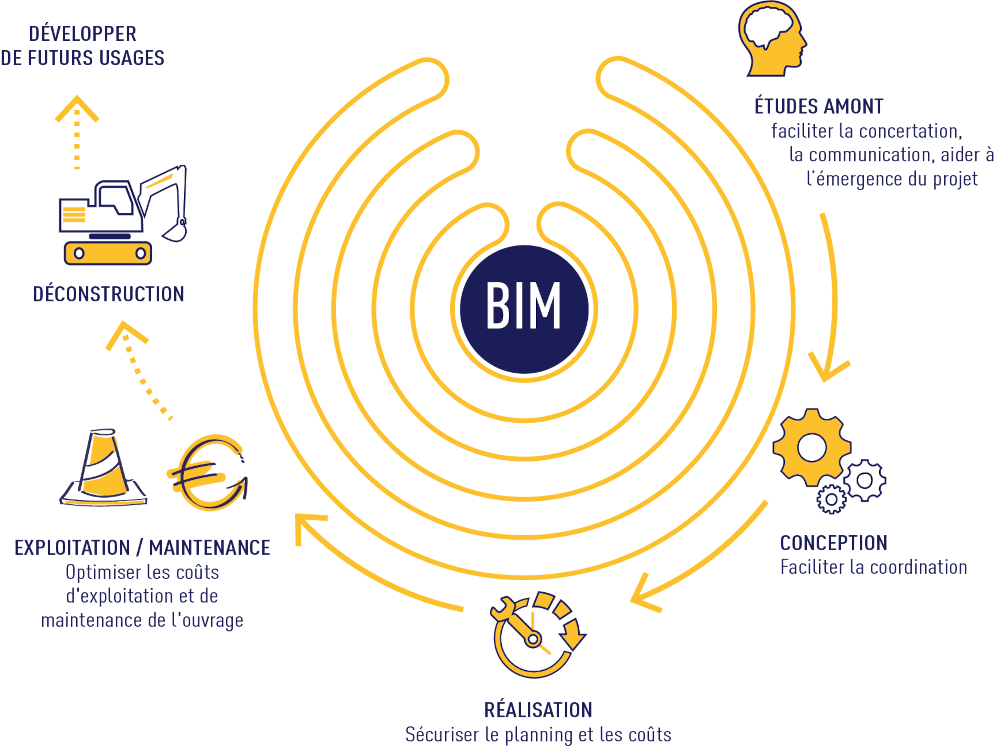
Nos références
RATP – Bus 2025
Le programme « Bus 2025 » initié par la RATP et Île-de-France Mobilités se concentre sur la transition écologique. La Commission européenne soutient cette ambition en attribuant 23 millions d’euros d’aide, qui servira pour l’achat de bus électriques et pour la conversion des dépôts à l’électrique et au biogaz en Île-de-France. Un investissement massif qui sera complété par un financement à hauteur de 23 millions d’euros de la Banque des territoires (Groupe Caisse des dépôts).
Dans ce contexte projet, les missions de conception BIM et Synthèse en BIM du site RATP Croix-Nivert ont été confiées à SUEZ Consulting, en groupement avec OTCI.
L’utilisation du BIM pour ce projet répond à 3 objectifs :
Dans ce contexte projet, les missions de conception BIM et Synthèse en BIM du site RATP Croix-Nivert ont été confiées à SUEZ Consulting, en groupement avec OTCI.
L’utilisation du BIM pour ce projet répond à 3 objectifs :
- Accroitre la compréhension du site grâce à sa modélisation sur la base de nuages de points, permettant d’en déduire les dimensions et caractéristiques précises ;
- Intégrer une structure et un réseau complexe en conservant une infrastructure existante ;
- Préserver l’héritage historique d’un site au cœur de Paris.
Clermont Auvergne Métropole – Extension de la station d’épuration des Trois Rivières
Le projet d’extension de la station d’épuration des trois rivières répond à 3 objectifs :
- Augmenter la capacité de traitement des eaux usées et pluviales ;
- Parvenir à une meilleure qualité de l'eau en réduisant les rejets d'eaux usées et pluviales par temps de pluie et en améliorant la qualité des rejets après traitement ;
- S’inscrire dans le développement des énergies renouvelables avec la production de biogaz à partir des boues de la station.
Pour le compte de Clermont Auvergne Métropole, SUEZ Consulting a été missionné pour assurer l’intégration de la démarche BIM pour le groupement d’entreprise. Dans ce cadre, le BIM permet :
- Améliorer la qualité de la conception et de la réalisation ;
- Etablir des livrables traditionnels 2D à partir des modèles BIM ;
- Bénéficier de la maquette numérique pour la réalisation des revues de projets et l’échange avec les divers acteurs du projet ;
- Effectuer la présynthèse de conception et la synthèse d’exécution avec la maquette numérique ;
- Utiliser la maquette numérique comme support de communication ;
- Obtenir un Dossier d'Ouvrages Exécutés (DOE) numérique utilisable pour le suivi patrimonial des installations projetées.
Saint-Brieuc Armor - Concevoir et développer une nouvelle usine d’eau potable
La Communauté d’agglomération Saint-Brieuc Armor s’est engagé dans sa transformation numérique et a missionné les équipes de SUEZ Consulting pour intégrer les méthodes BIM dans la construction d’une nouvelle usine de production d’eau potable.
Objectif : monter en compétences pour mettre en place des projets 3.0, opérer une transformation organisationnelle et faire évoluer l’agglomération bretonne vers la smart city.
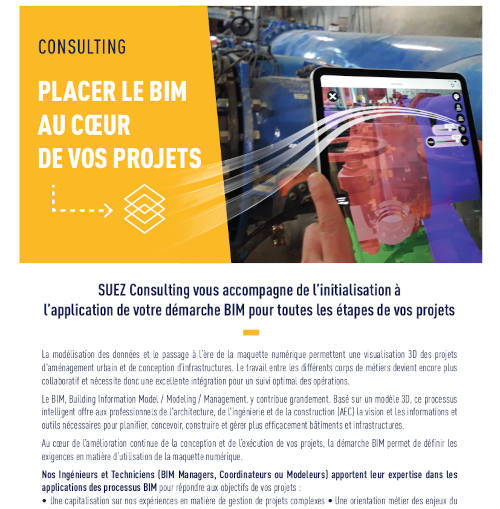
Placez le BIM au cœur de vos projets SUEZ
2MO
PDF
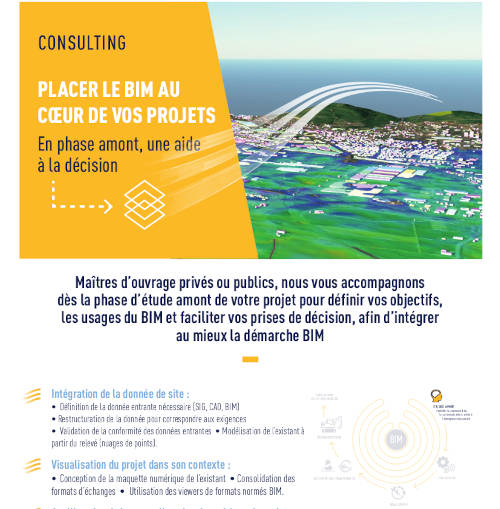
Placez le BIM au cœur de vos projets - En phase amont, une aide à la décision
821Ko
PDF
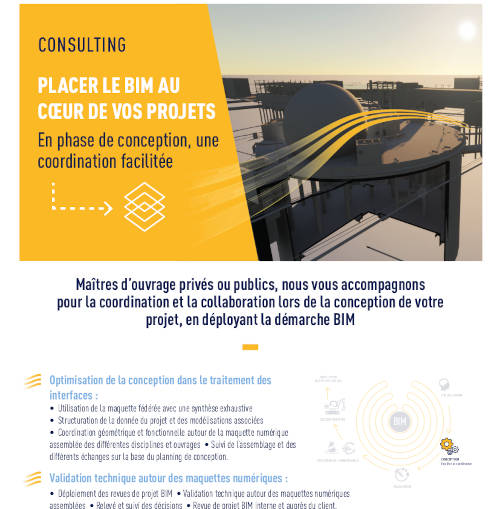
Placez le BIM au cœur de vos projets - En phase de conception, une coordination facilitée
725Ko
PDF
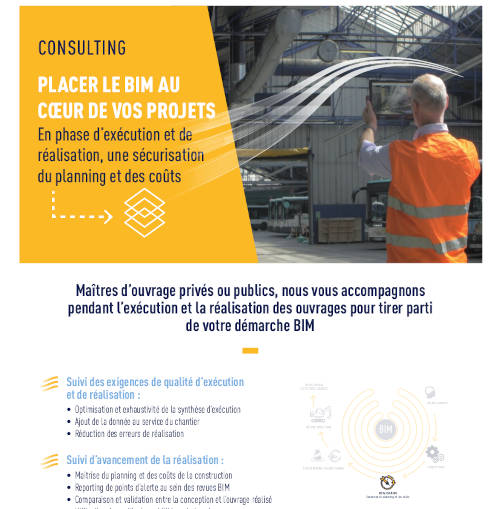
Placez le BIM au cœur de vos projets - En phase d’exécution et de réalisation, une sécurisation du planning et des coûts
678Ko
PDF
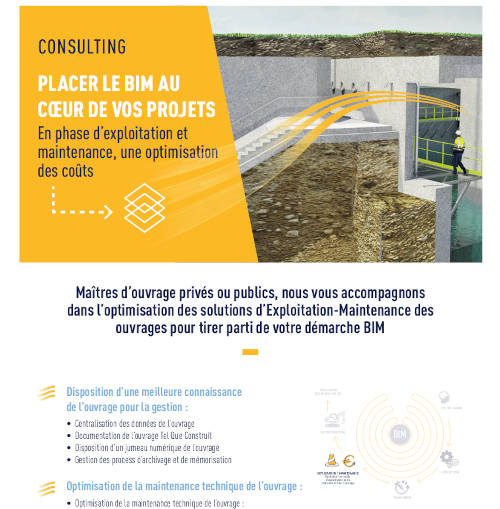
Placez le BIM au cœur de vos projets - En phase d’exploitation et maintenance, une optimisation des coûts
999Ko
PDF
Contact
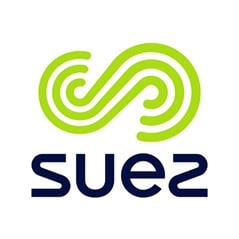
Laurence GAUTHIER
Directrice de l’unité BIM
[email protected]
